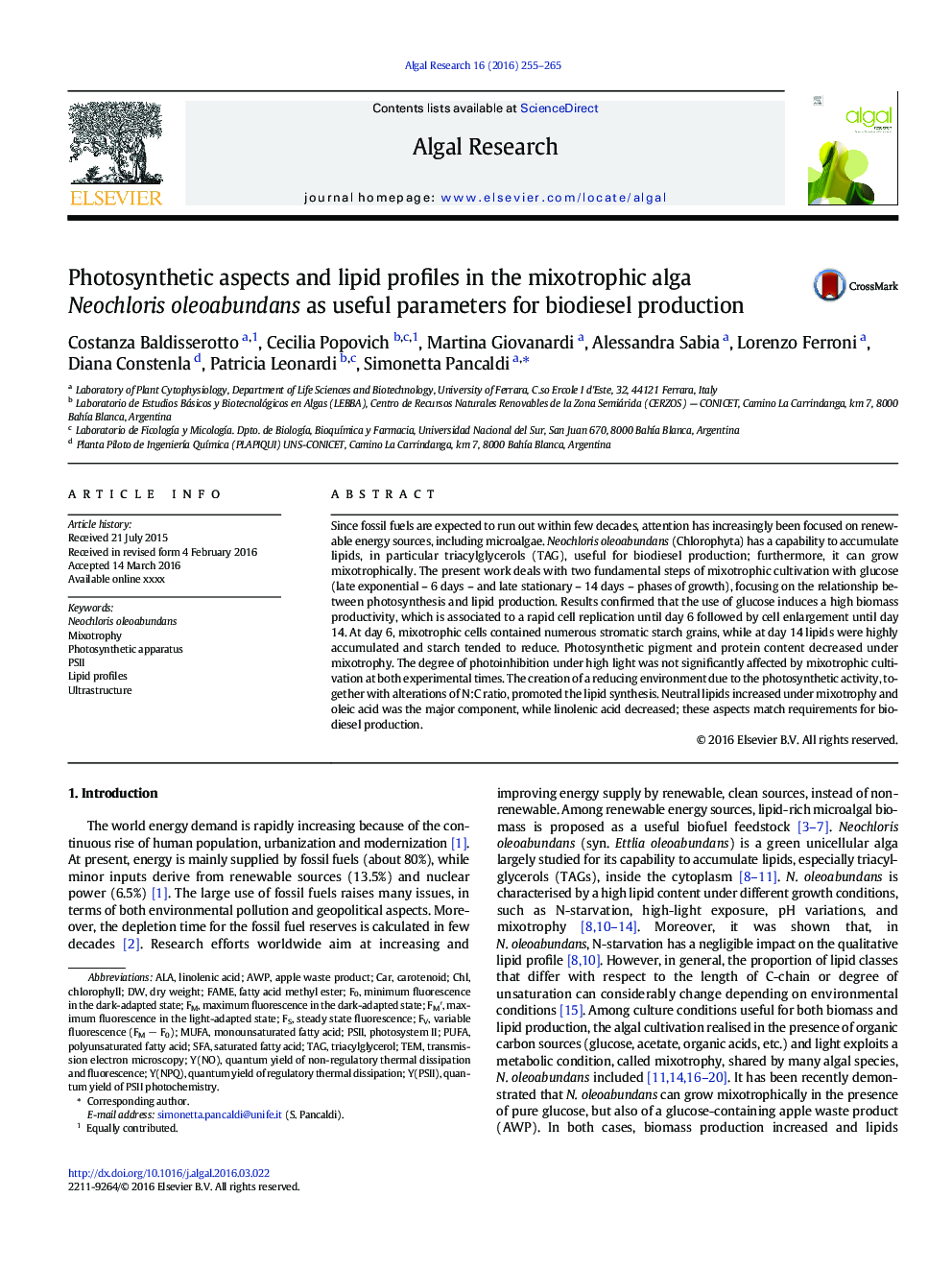| Article ID | Journal | Published Year | Pages | File Type |
|---|---|---|---|---|
| 8087159 | Algal Research | 2016 | 11 Pages |
Abstract
Since fossil fuels are expected to run out within few decades, attention has increasingly been focused on renewable energy sources, including microalgae. Neochloris oleoabundans (Chlorophyta) has a capability to accumulate lipids, in particular triacylglycerols (TAG), useful for biodiesel production; furthermore, it can grow mixotrophically. The present work deals with two fundamental steps of mixotrophic cultivation with glucose (late exponential - 6Â days - and late stationary - 14Â days - phases of growth), focusing on the relationship between photosynthesis and lipid production. Results confirmed that the use of glucose induces a high biomass productivity, which is associated to a rapid cell replication until day 6 followed by cell enlargement until day 14. At day 6, mixotrophic cells contained numerous stromatic starch grains, while at day 14 lipids were highly accumulated and starch tended to reduce. Photosynthetic pigment and protein content decreased under mixotrophy. The degree of photoinhibition under high light was not significantly affected by mixotrophic cultivation at both experimental times. The creation of a reducing environment due to the photosynthetic activity, together with alterations of N:C ratio, promoted the lipid synthesis. Neutral lipids increased under mixotrophy and oleic acid was the major component, while linolenic acid decreased; these aspects match requirements for biodiesel production.
Keywords
quantum yield of PSII photochemistryY(NPQ)AWPNeochloris oleoabundansMixotrophySFAMUFAALAChlPSIIFm′Linolenic acidsaturated fatty acidmonounsaturated fatty acidPolyunsaturated fatty acidPUFATemtriacylglycerolTAG یا triacylglycerols Photosynthetic apparatusUltrastructureChlorophyllPhotosystem IISteady state fluorescenceCARFatty acid methyl esterFAME یا fatty acid methyl esters Transmission electron microscopyY(NO)dry weightLipid profilesCarotenoid
Related Topics
Physical Sciences and Engineering
Energy
Renewable Energy, Sustainability and the Environment
Authors
Costanza Baldisserotto, Cecilia Popovich, Martina Giovanardi, Alessandra Sabia, Lorenzo Ferroni, Diana Constenla, Patricia Leonardi, Simonetta Pancaldi,
